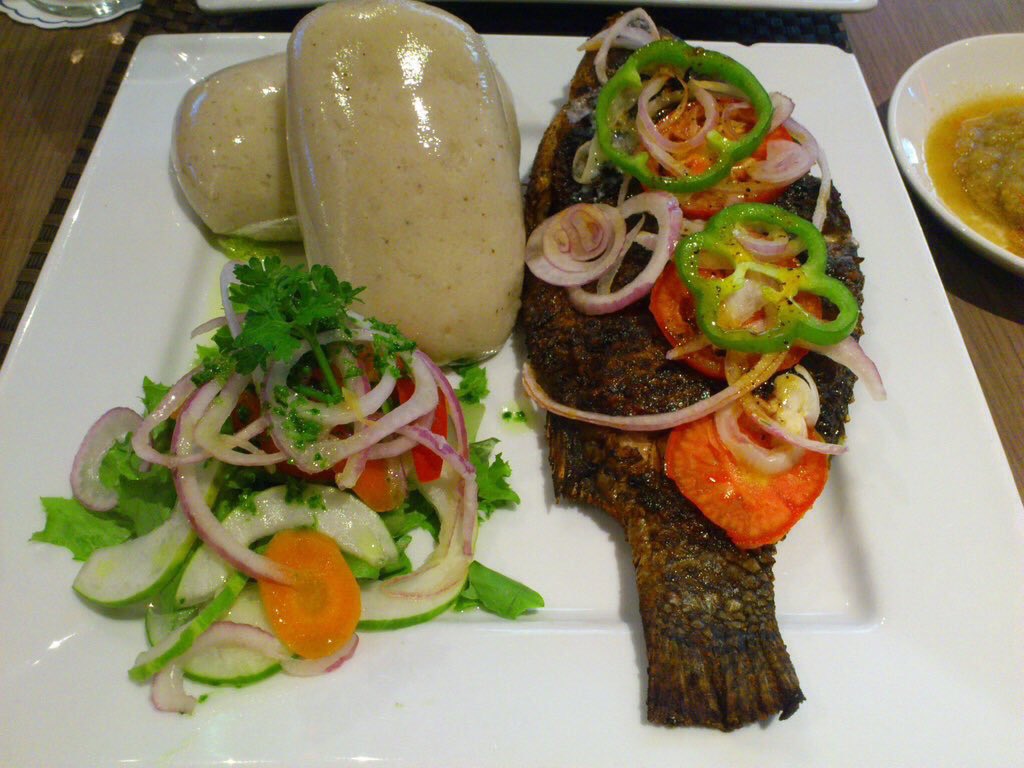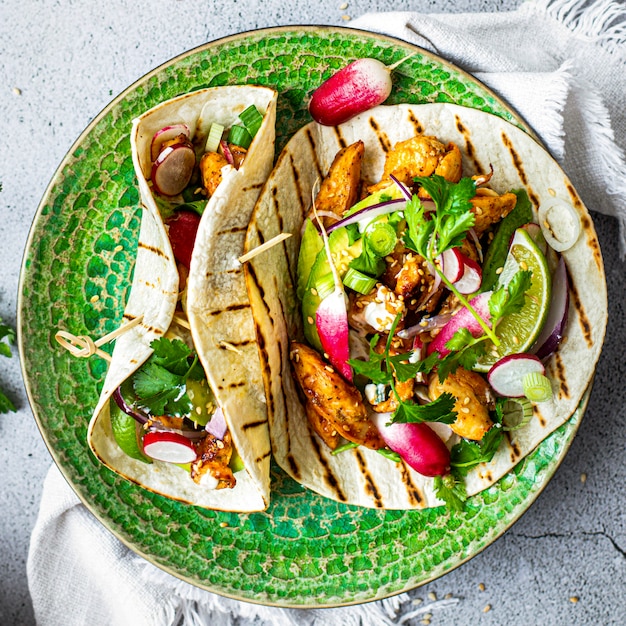Banku: Ghana's Signature Food

Banku is a traditional Ghanaian dish made primarily from fermented corn and cassava dough. It is a staple food in many regions of Ghana, especially among the Ewe and Ga-Adangme people who live along the coastal areas. Banku is known for its smooth, slightly sour taste, and it is commonly eaten with various soups, stews, or sauces, most often accompanied by grilled fish, okra stew, or pepper sauce.
Ingredients and Preparation
Corn Dough: The primary ingredient for Banku is corn dough, which is made from fermented ground corn. This fermentation gives Banku its slightly tangy taste.
Cassava Dough: Cassava dough, which is also fermented, is mixed with the corn dough. The cassava adds a soft texture and helps in making the dish more starchy and filling.
Water: Water is mixed with the dough to form a thick mixture, which is then cooked.
How Banku is Made
Mixing: Corn and cassava dough are combined in a pot with water and stirred until a smooth, thick mixture is formed.
Cooking: The mixture is cooked on medium heat, stirring continuously to prevent lumps from forming. As it cooks, it thickens and takes on a solid, stretchy consistency. The process requires constant stirring to ensure that the mixture does not stick to the pot and burn.
Final Form: Once fully cooked, the dough is shaped into round balls or scoops and served hot.
What Banku is Eaten With
Pepper Sauce (Shito): Banku is often enjoyed with a spicy pepper sauce, made from blended fresh chilies, onions, and tomatoes, sometimes with shrimp or fish powder.
Grilled Tilapia: One of the most popular combinations is Banku served with grilled or fried tilapia fish. The fish is typically seasoned with spices, grilled to perfection, and served alongside the Banku.
Okra Soup: Another common pairing is Banku with okra stew or soup, a thick, slimy, and flavorful dish made with okra, tomatoes, onions, palm oil, and fish or meat.
Light Soup: Banku is also paired with light soups, a clear, spicy broth often made with goat meat, fish, or chicken.
Banku holds a significant place in Ghanaian food culture, especially in the coastal regions. It is considered a versatile meal, commonly eaten for lunch or dinner, and enjoyed both at home and in local eateries.
The dish is cherished for its ability to fill you up and provide long-lasting energy, which makes it ideal for people who engage in physically demanding work.
Banku is often eaten using the fingers. Small portions are pinched off, rolled into a ball, and dipped into the accompanying soup, stew, or sauce before being eaten. This communal way of eating Banku is a part of Ghana’s rich food culture, where meals are often shared with family and friends.
Banku is more than just a dish in Ghana—it is a staple of everyday life and a symbol of the country’s rich culinary heritage. Its combination of corn and cassava dough gives it a unique flavor and texture, making it a versatile food that pairs well with a variety of accompaniments, from spicy stews to grilled fish. Whether enjoyed at a street-side eatery or at home, Banku remains a beloved meal across Ghana.
Photo Credit: Ido Ghana
Ingredients and Preparation
Corn Dough: The primary ingredient for Banku is corn dough, which is made from fermented ground corn. This fermentation gives Banku its slightly tangy taste.
Cassava Dough: Cassava dough, which is also fermented, is mixed with the corn dough. The cassava adds a soft texture and helps in making the dish more starchy and filling.
Water: Water is mixed with the dough to form a thick mixture, which is then cooked.
How Banku is Made
Mixing: Corn and cassava dough are combined in a pot with water and stirred until a smooth, thick mixture is formed.
Cooking: The mixture is cooked on medium heat, stirring continuously to prevent lumps from forming. As it cooks, it thickens and takes on a solid, stretchy consistency. The process requires constant stirring to ensure that the mixture does not stick to the pot and burn.
Final Form: Once fully cooked, the dough is shaped into round balls or scoops and served hot.
What Banku is Eaten With
Pepper Sauce (Shito): Banku is often enjoyed with a spicy pepper sauce, made from blended fresh chilies, onions, and tomatoes, sometimes with shrimp or fish powder.
Grilled Tilapia: One of the most popular combinations is Banku served with grilled or fried tilapia fish. The fish is typically seasoned with spices, grilled to perfection, and served alongside the Banku.
Okra Soup: Another common pairing is Banku with okra stew or soup, a thick, slimy, and flavorful dish made with okra, tomatoes, onions, palm oil, and fish or meat.
Light Soup: Banku is also paired with light soups, a clear, spicy broth often made with goat meat, fish, or chicken.
Banku holds a significant place in Ghanaian food culture, especially in the coastal regions. It is considered a versatile meal, commonly eaten for lunch or dinner, and enjoyed both at home and in local eateries.
The dish is cherished for its ability to fill you up and provide long-lasting energy, which makes it ideal for people who engage in physically demanding work.
Banku is often eaten using the fingers. Small portions are pinched off, rolled into a ball, and dipped into the accompanying soup, stew, or sauce before being eaten. This communal way of eating Banku is a part of Ghana’s rich food culture, where meals are often shared with family and friends.
Banku is more than just a dish in Ghana—it is a staple of everyday life and a symbol of the country’s rich culinary heritage. Its combination of corn and cassava dough gives it a unique flavor and texture, making it a versatile food that pairs well with a variety of accompaniments, from spicy stews to grilled fish. Whether enjoyed at a street-side eatery or at home, Banku remains a beloved meal across Ghana.
Photo Credit: Ido Ghana

